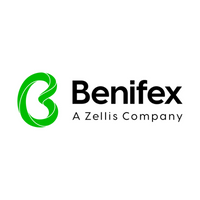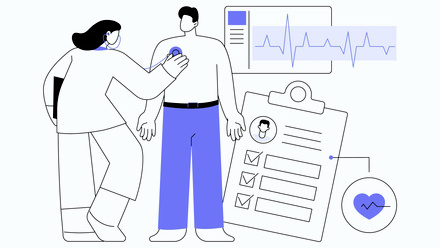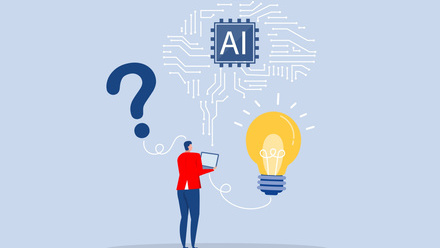Connecting benefits with culture and values
Employees today are looking for more than just a paycheck. They want to feel connected, part of an engaging and supportive culture and aligned with their employer’s mission and values.
Your reward and benefits offering is a powerful way to bring your culture to life and organisations are increasingly looking to align benefits with company culture, values and mission.
Benefex’s 2024 research report, The Expectation Exponential, found that aligning benefits with company values and purpose is the top way employers are planning to evolve benefits over the next 12 months.
As a result, more companies are investing in benefits that support their ESG and DEI goals and enable employees to live and experience the organisation's values.
For example, benefits such as tree planting, electrical vehicles (EVs), and life-stage benefits, are all growing in popularity and demonstrate companies' intent to deliver on their commitments.
However, to have the intended impact, employees need to know what’s on offer – and understand how their benefits connect with your culture and values.
Here are 4 steps to align benefits with company culture:
1. Align your benefits with your corporate brand and reward objectives
One of the first steps to launching an effective benefits programme is creating a global benefits brand – this makes your benefits communications recognisable, whoever you’re talking to and wherever they are in the world.
A benefits brand also helps you align your messaging with your values and mission – and ultimately establish a real, authentic connection with your people.
Your benefits brand should link to your corporate brand, your employer brand and your reward objectives.
Gathering feedback from stakeholders and employees is a great way to understand what your brand, values and mission really mean to them.
Here’s an example of how Dojo tied its benefits brand to its overarching brand and wellbeing pillars:
“We believe that a huge part of the success of our scheme is down to the communications and the branding of the platform, which really is aligned to the Dojo brand family and aligns with our culture. We wanted to create a home to bring together our initiatives to cover all areas of our employee benefits; we centered our benefits around three core pillars – for your health and mind, for your time, and for your finance and future.” - Scott Baker, director of total reward, Dojo.
2. Create a home for benefits and culture
In today’s environment, information is coming at people from all directions and it can be difficult to cut through the noise.
Forward-thinking companies are increasingly consolidating their stories and messages around how their benefits align with the company values, behaviors, and culture in a single place – on the benefits platform. HR and Reward leaders are using benefits tech to communicate the value of everything they do for their people, the environment, and the wider community.
Using a digital platform, employers can effectively communicate their culture to employees across all levels, regardless of their role or location – which is especially important where employees are working in a hybrid or remote. This information should be available to all to access asynchronously.
By creating dynamic content, spaces and using a news feed within the benefits platform, employers can keep their people coming back to the platform to learn how benefits can help them, understand the detail of what's on offer, and most importantly, take action.
3. Communicate benefits often
Benefits communications aren’t just for annual enrolment, they should be communicated often.
Our research shows that employees want more support in making better benefits choices and they want to receive more regular benefits communications.
More than two-thirds (69%) of global employees say email is their preferred channel of communication; however, a multi-channel approach is essential to ensure benefits messages hit the mark.
For employees who don’t work at a desk, app-based benefits tech has an even greater role to play, alongside managers cascading benefits messages, and print collateral.
In fact, we’re seeing a growing trend in customers requesting benefits briefing assets for managers.
Create content that highlights how specific benefits support the organisation’s mission and culture.
Elevate benefits into an everyday resource rather than a once-a-year consideration.
4. Close the feedback loop
Two-way communication is important to make sure your benefits strategy is having the intended impact and supporting your organisation’s culture in the ways you want.
Surveying people on what is important to them is a great input to help you design your reward strategy.
Gathering feedback from your employees will help you understand their attitudes, needs and wants from what benefits employees want to see more of, to their communications preferences.
You might not want to or be able to act on every piece of feedback you receive but it’s important to listen and to explain the reasons behind your strategy or approach.
To close the feedback loop, explain why you’ve focused on a specific area, benefit, or initiative and show how this decision supports your organisation’s culture.
Benefits are part of culture
Benefits and culture are symbiotic – your organisation's culture should inform your benefits strategy. In turn your benefits strategy will nurture your culture.
Using benefits to communicate your culture is a powerful way to attract, engage and retain the very best people and help them thrive. It also ensures employees feel valued, appreciated and supported.
To learn more about how to engage employees in benefits and create an impactful benefits brand, read our ultimate guide to benefits communications.
Supplied by REBA Associate Member, Benifex
The home of award-winning employee benefits, reward, recognition, & communications.








